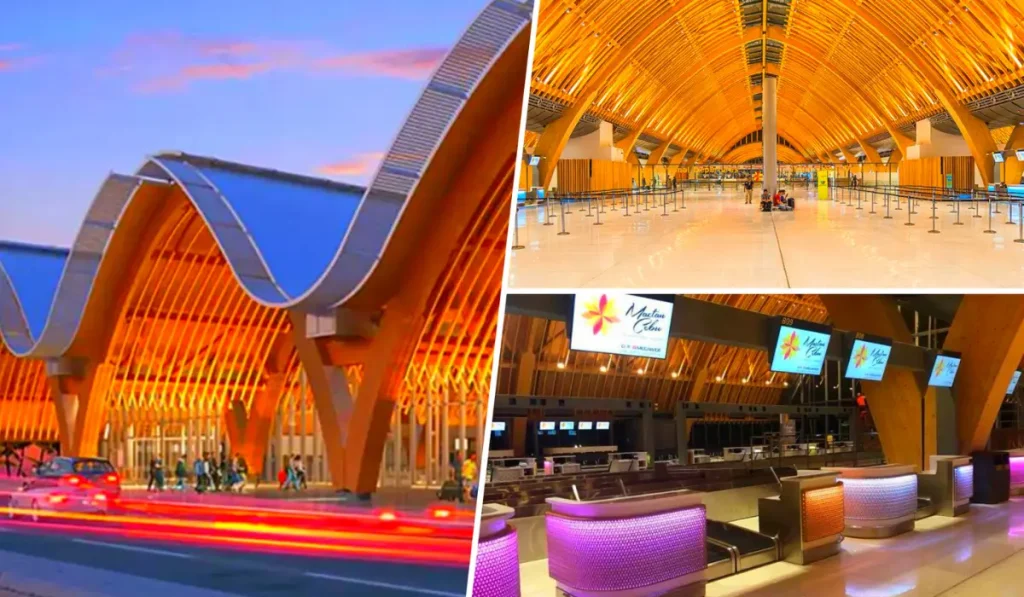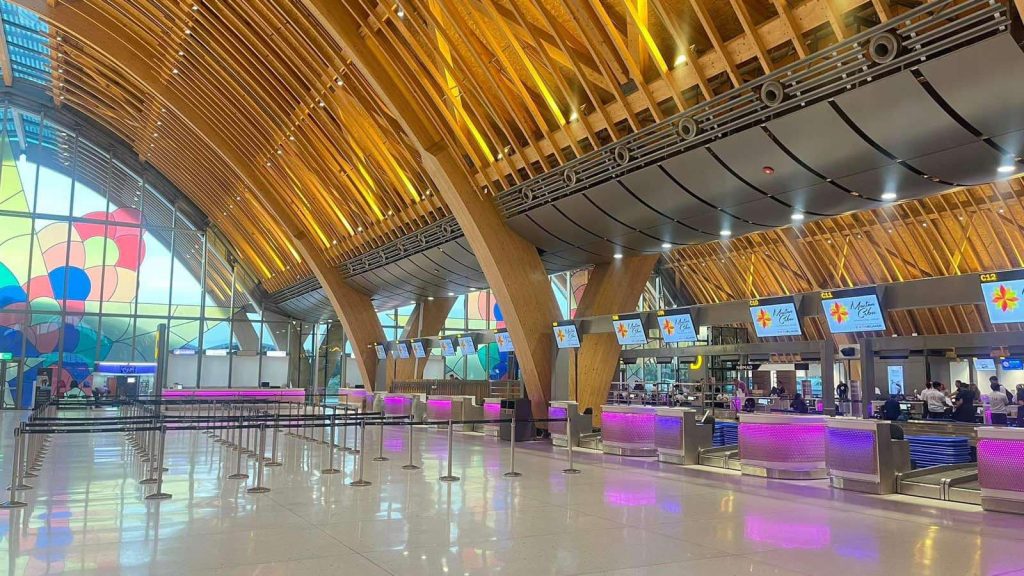Where to Stay in Cebu
(Zoom in on the map to see the available hotels and resorts Or See Accomodations.)
Mactan-Cebu International Airport: A Gateway to the Philippines and Beyond
The Mactan-Cebu International Airport (MCIA) is more than just an airport—it’s a symbol of Cebu’s growth as a regional hub and a gateway to the Philippines. Located on Mactan Island, just a short drive from Cebu City, MCIA has become one of the country’s most important aviation hubs, connecting travelers to domestic and international destinations.
A Modern Terminal with World-Class Facilities
MCIA’s Terminal 2, designed by renowned architect Budji Layug and Royal Pineda, is a masterpiece of modern design. Its sleek, open spaces are inspired by Filipino culture, featuring natural materials like bamboo and wood. The terminal is not only visually stunning but also highly functional, offering state-of-the-art facilities to ensure a seamless travel experience.
Travelers can enjoy a wide range of amenities, including duty-free shopping, local and international dining options, and comfortable lounges. Free Wi-Fi, charging stations, and efficient immigration and baggage services make MCIA a traveler-friendly airport.

Expanding to Meet Growing Demand
As passenger traffic continues to grow, MCIA is undergoing significant expansion. The airport has seen a steady increase in both domestic and international flights, thanks to Cebu’s popularity as a tourist destination and its strategic location in the Visayas region.
The expansion plans include upgrading existing facilities and constructing new infrastructure to accommodate larger aircraft and more passengers. These developments aim to solidify MCIA’s position as a key player in Southeast Asia’s aviation industry.
Cebu’s Role as a Regional Hub
MCIA plays a crucial role in boosting Cebu’s economy and tourism. As the second busiest airport in the Philippines, it serves as a vital link for travelers visiting the Visayas and Mindanao regions. Its international flights connect Cebu to major cities in Asia, the Middle East, and beyond, making it a convenient entry point for tourists and business travelers alike.
The airport’s growth also supports Cebu’s thriving industries, including tourism, manufacturing, and IT-BPO services. By attracting more visitors and investors, MCIA contributes to the region’s economic development.
A Sustainable Future
MCIA is committed to sustainability, incorporating eco-friendly practices into its operations. The airport has implemented energy-efficient systems, waste management programs, and initiatives to reduce its carbon footprint. These efforts align with global trends in sustainable aviation and demonstrate MCIA’s dedication to environmental responsibility.
Conclusion
The Mactan-Cebu International Airport is more than just a transportation hub—it’s a reflection of Cebu’s progress and potential. With its modern facilities, expansion plans, and commitment to sustainability, MCIA is poised to become one of Southeast Asia’s leading airports. Whether you’re a first-time visitor or a frequent traveler, MCIA offers a world-class experience that sets the tone for your journey.
As Cebu continues to grow, MCIA will remain at the heart of its success, connecting the island to the world and welcoming travelers with the warmth and hospitality that the Philippines is known for.




